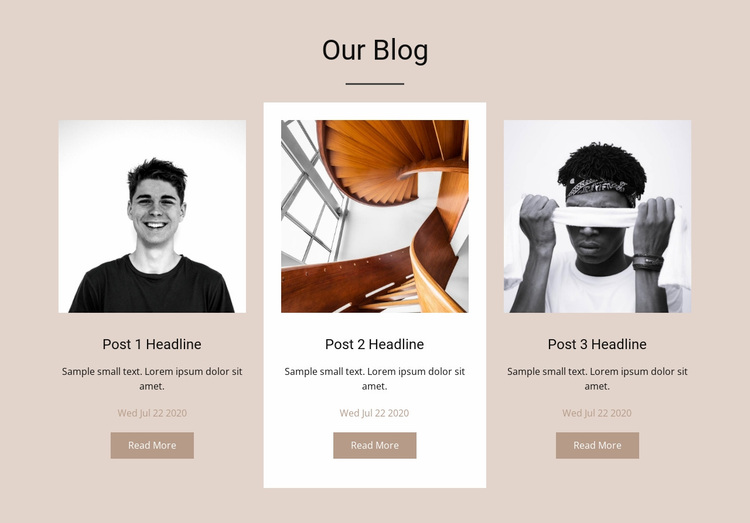Mobile-Friendly Website Design for Smooth Viewing on Any Device
Mobile-Friendly Website Design for Smooth Viewing on Any Device
Blog Article
Top Tips for Developing an Impactful Website Style That Transforms
To accomplish this, one should consider a selection of aspects, including understanding the target audience, focusing on individual experience, and enhancing for mobile platforms. The critical usage of compelling call-to-actions and a distinct visual hierarchy plays a crucial duty in assisting users via their trip.

Understand Your Target Target Market
Comprehending your target audience is fundamental to reliable web site style, as it lays the groundwork for creating an engaging user experience. Identifying that your individuals are, including their demographics, preferences, and behaviors, makes it possible for designers to tailor the website's content, layout, and capability to fulfill certain demands.
Performing extensive market research study is critical in this procedure. Studies, meetings, and analytics can supply useful understandings right into individual expectations and pain points. By compiling this information, developers can produce individual personas that represent different sectors of the audience, making certain that design choices are informed and appropriate.
In addition, comprehending the target market helps in choosing ideal style components such as color plans, typography, and images that resonate with individuals. An internet site that speaks straight to its target market fosters a sense of link and count on, urging longer check outs and greater conversion rates.
Eventually, a user-centered strategy to site layout not only improves user fulfillment but additionally supports organization objectives by driving interaction and commitment. By prioritizing the requirements and choices of the target audience, a web site can effectively serve its function and attain desired results.
Prioritize Individual Experience
To boost the overall performance of a website, prioritizing individual experience (UX) is essential (Website Design). A well-designed UX makes sure that site visitors can browse the site easily, locate information rapidly, and involve with material meaningfully. This leads to enhanced individual satisfaction and higher conversion rates
Begin by applying intuitive navigation. Menus ought to be rationally structured, permitting users to locate crucial areas of the site with minimal initiative. Uniformity in layout aspects, such as color schemes and typefaces, cultivates experience, which is vital for preserving user involvement.
In addition, think about the loading rate of your web site. A delay of just a few seconds can bring about considerable drop-offs, as individuals are less most likely to wait on a slow-loading page. Enhancing pictures and optimizing code can boost efficiency and keep visitors.
By focusing on customer experience, you not only produce an extra enjoyable atmosphere for visitors however also reinforce your brand name's reputation. Ultimately, a focus on UX is an investment in the long-lasting success of your web site.
Enhance for Mobile Devices
Enhancing for mobile tools is critical in today's electronic landscape, where a boosting variety of individuals gain access to websites with smartphones and tablet computers. A mobile-friendly layout not only boosts individual experience but likewise plays a substantial role in boosting internet search engine positions. To attain this, it is vital to adopt a responsive design that instantly adapts to different screen sizes and orientations.

Loading speed is one more vital element; mobile users are generally less person and expect rapid access to information. Maximize pictures and leverage internet browser caching to enhance performance. Ultimately, test your website on numerous devices and display resolutions to determine and rectify any type of potential use problems. By prioritizing mobile optimization, you ensure that your internet site stays affordable and successfully engages a wider audience.
Usage Engaging Call-to-Actions
A site's effectiveness usually depends upon its ability to direct site visitors toward wanted actions, making engaging call-to-actions (CTAs) vital components of style. CTAs act as the pivotal factors that route users to engage with the website, whether that suggests purchasing, signing up for an e-newsletter, or downloading and install a source.
To develop effective CTAs, clarity is extremely important. Usage concise language that clearly communicates the action you want the customer to take. Phrases such as "Start," "Join Free," or "Shop Now" not just share necessity however additionally get rid of uncertainty. The positioning of CTAs is similarly crucial; they need to be purposefully placed throughout the page to guarantee they are conveniently noticeable, particularly in high-traffic areas.
Furthermore, the design of CTAs should stand apart without being noticeable. Employ contrasting shades and clear typefaces to ensure they capture attention. In addition, index take into consideration making use of directional hints, such as arrows or images, to guide customers towards these switches. By concentrating on these aspects, services can substantially improve individual engagement, driving conversions and ultimately achieving their website's objectives.
Emphasis on Visual Pecking Order
Efficient internet site layout counts heavily on a well-structured visual power structure that overviews users via content flawlessly. By organizing elements in a fashion that prioritizes information, developers can enhance user experience and assist in decision-making. This includes making use of size, shade, comparison, and spacing tactically to accentuate one of the most essential components of a page.
Making use of larger typefaces for headings and subheadings establishes a clear distinction in between various sections, enabling customers to check content effortlessly. In addition, employing contrasting shades for switches and calls-to-action can capture individual interest and urge interaction. Whitespace is one more necessary component; it avoids clutter and makes it possible for go to my site customers to focus on essential messages without disturbances.
Images and graphics ought to match the text while likewise sticking to the well-known hierarchy, reinforcing the general message (Website Design). Uniformity in style components, such as color pattern and typography, more reinforces the aesthetic hierarchy, making navigation intuitive

Final Thought
In conclusion, effective internet site style necessitates a comprehensive understanding of the target audience, prioritization of user experience, and mobile optimization. Inevitably, a well-executed internet site style serves as a vital part in driving customer actions and attaining service objectives.
Report this page